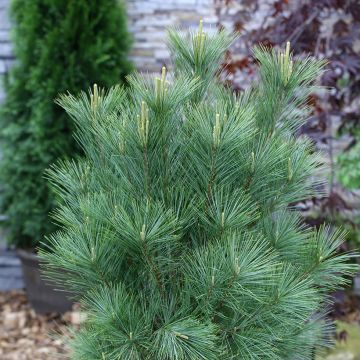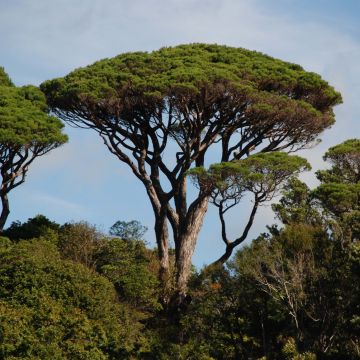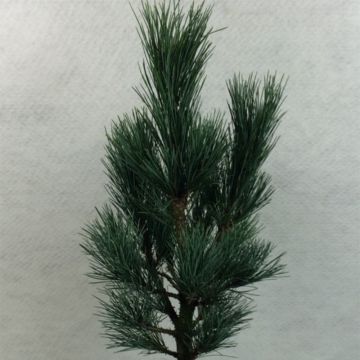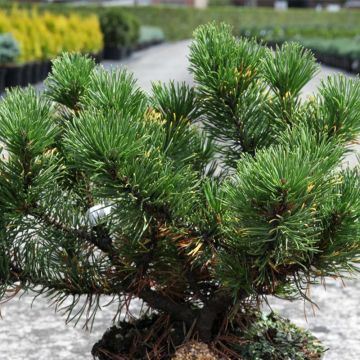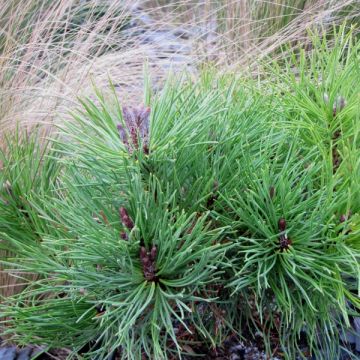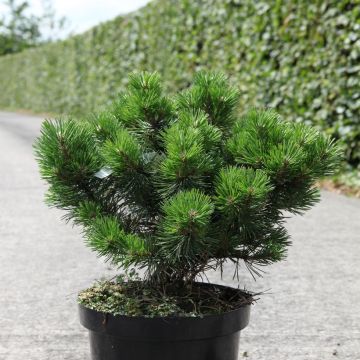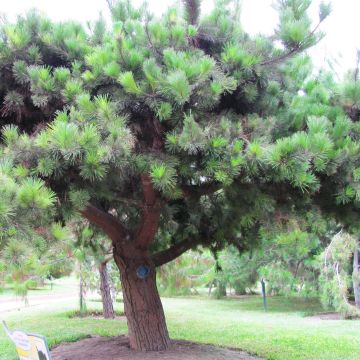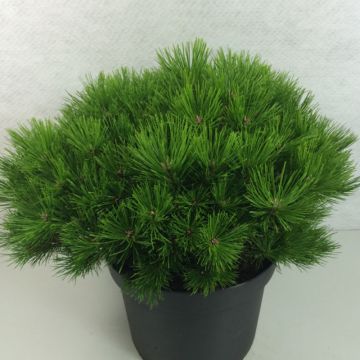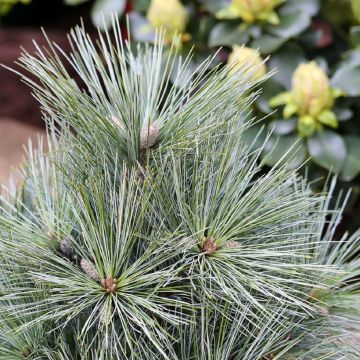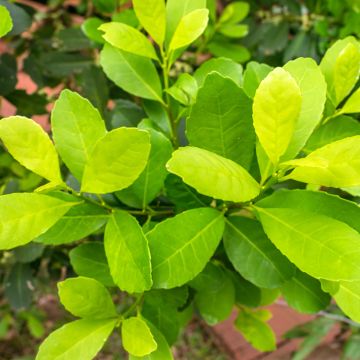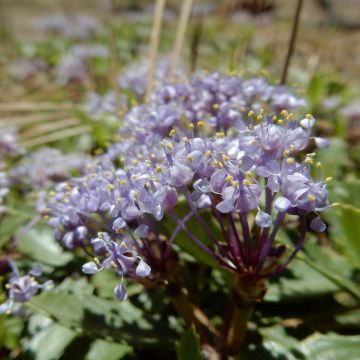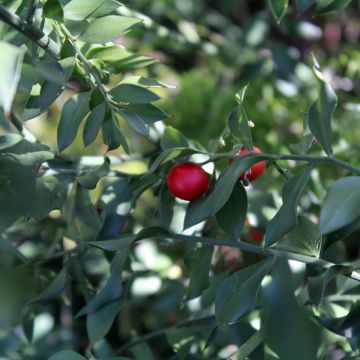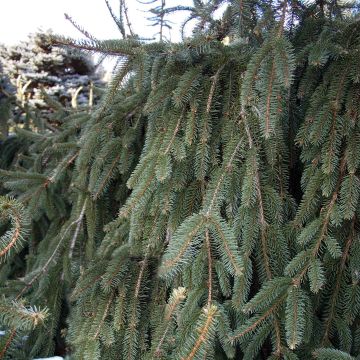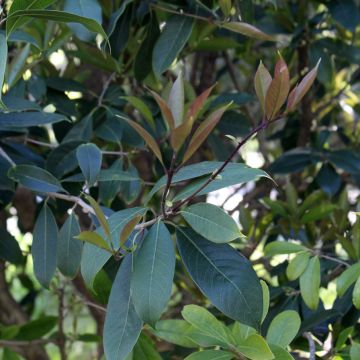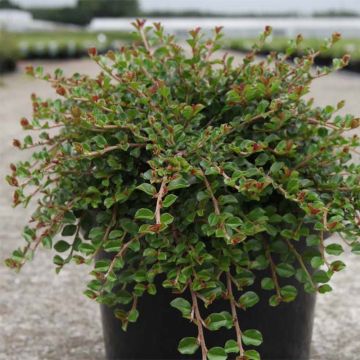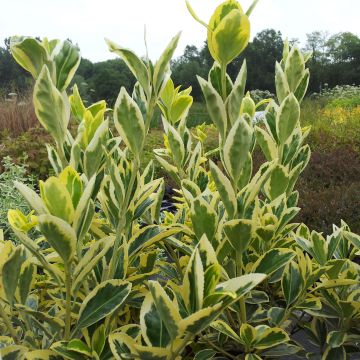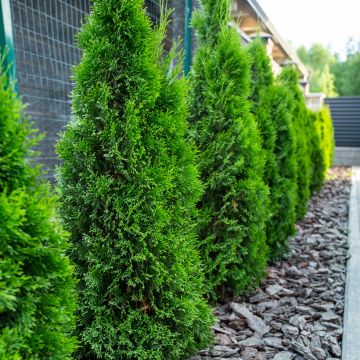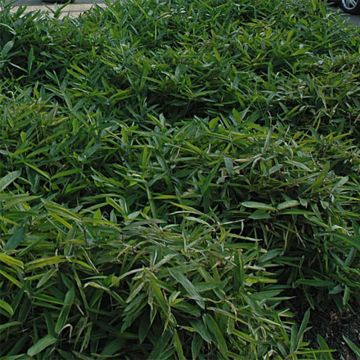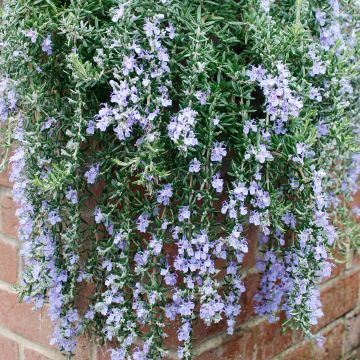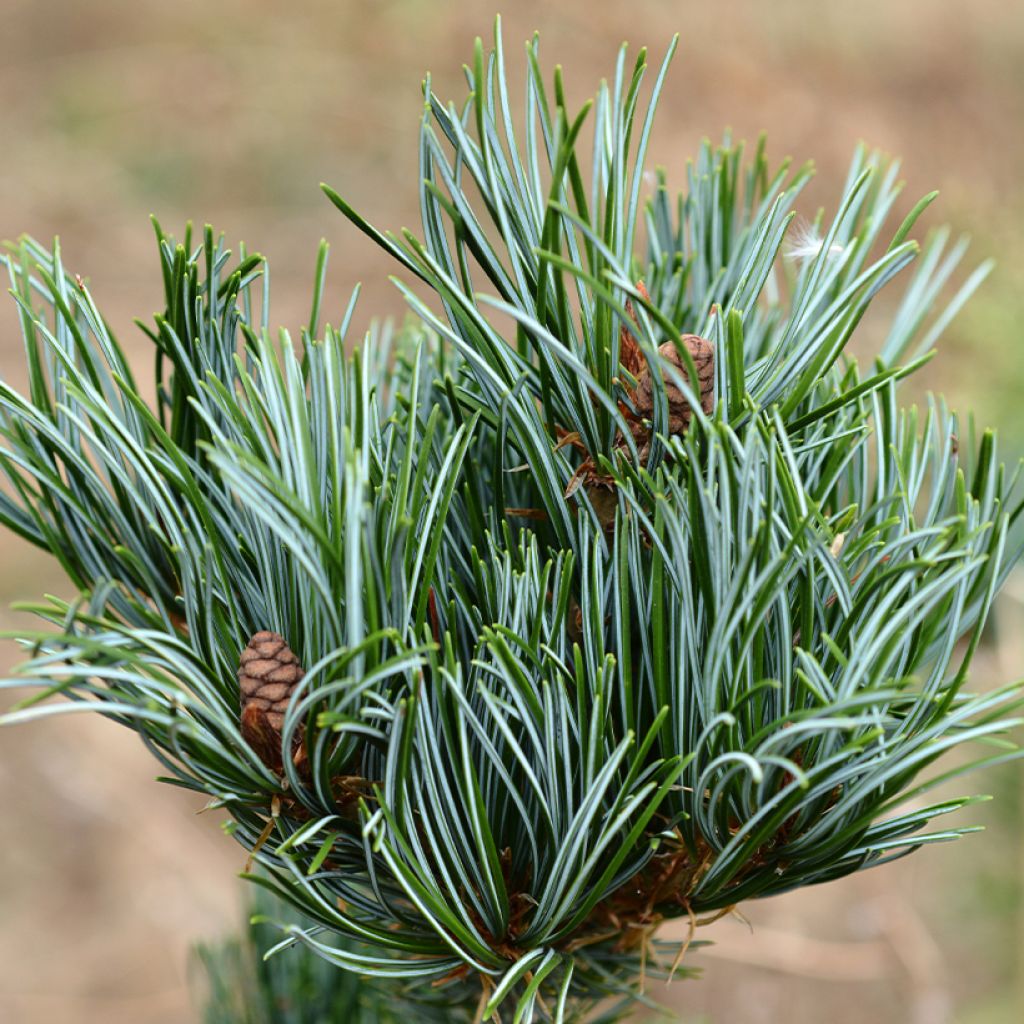

Pinus parviflora Iribune - Japanese white pine
Pinus parviflora Iribune - Japanese white pine
Pinus parviflora Iribune
Japanese White Pine, Five-needle Pine, East Asian White Pine
This item cannot be shipped to the selected country
Delivery charge from €5.90
Delivery to Corse prohibited
More information
Schedule delivery date,
and select date in basket
This plant carries a 24 months recovery warranty
More information
We guarantee the quality of our plants for a full growing cycle, and will replace at our expense any plant that fails to recover under normal climatic and planting conditions.
From €5.90 for pickup delivery and €6.90 for home delivery
Express home delivery from €8.90.
Delivery to Corse prohibited: UE law prohibits the import of this plant from mainland France to Corse as part of the fight against Xylella fastidiosa. Please accept our sincere apologies.
More information
Does this plant fit my garden?
Set up your Plantfit profile →
Description
Pinus parviflora 'Iribune' is a very rare dwarf variety of Japanese White Pine. Its foliage appears turquoise because each needle has shades of soft green and silvery blue. They are twisted, giving the plant a bristly appearance. This conifer has an upright to bushy habit, and its branches are ascending, with needles in a vertical position: the overall effect is graceful and slender. Give it a prominent place in the garden to admire it at will. Undemanding and very frugal, it prefers sun and well-drained, loose, and moderately fertile soil, damp or even fairly dry in summer.
Pinus parviflora, also known as Japanese White Pine or Five-needle Pine, is a conifer from the Pinaceae family, which includes many other important genera for ornamental or economic purposes, such as Pines, Firs, Cedars, Larches, or Spruces. This Pine is native to forests at altitudes between 1300 and 1800 m in the Japanese islands. In its natural environment, this species reaches over 20 m in height and has a pyramidal habit, often as wide as it is tall, with a dense conical crown. Appreciated for its wood in Japan, this elegant species has given rise to very beautiful forms, frequently grown as bonsai.
The 'Iribune' variety forms an elegant dwarf bush with a well-defined central axis and irregularly arranged, vertical and erect lateral branches. Slow-growing, it reaches about 1 m in height and 40 cm in width after 5 to 6 years of planting. After 15 to 20 years, it reaches a height of 2 m and a width of 1.20 m. The young branches are brown-green, and the bark becomes grey-black with age. This Pine has beautiful foliage composed of needles in groups of 5, clustered on the ascending branches. Quite long, measuring from 4.5 to 6.5 cm, twisted and vertical, they are both silvery-blue and green, giving a turquoise impression. The male flowers appear abundantly in spring, followed by brown female cones that persist on the plant throughout the season. This slow-growing Pine is resistant to urban pollution and extremely hardy (to -25/-30°C).
Pinus parviflora 'Iribune' is a hardy and easy-to-grow species that thrives in a wide range of soil conditions, as long as it is well-drained. It appreciates full sun and will grow in all regions. Japanese White Pines in general deserve to be better known and cultivated. 'Iribune' forms a beautiful, elegant, and distinctive dwarf subject. Plant it in a Japanese garden or a contemporary garden, with Fargesias, Camellias. Pair it with other dwarf conifers with different coloured foliage, steel blue, yellow-green, dark green, developing other silhouettes, with prostrate, globose, or columnar habits. Highly aesthetic evergreen conifers have interesting architectural qualities for all gardens. Play with volumes and colours by associating them with flowering shrubs and ground cover plants.
Report an error about the product description
Plant habit
Flowering
Foliage
Botanical data
Pinus
parviflora
Iribune
Pinaceae
Japanese White Pine, Five-needle Pine, East Asian White Pine
Cultivar or hybrid
Other Pinus - Pine
Planting and care
Pinus parviflora 'Iribune' can be planted from September to November and from February to June in ordinary, even poor, sandy or chalky, but well-drained soil. Choose a sunny location or, at most, partially shaded in hot climates. Soak the root balls well before planting. Add organic fertiliser at planting and water generously for the first two years, and in case of abnormally prolonged drought. In very poor soil, you can apply a special conifer fertiliser every year in April and weed the soil in summer. This very hardy conifer (down to at least -20°C) is not afraid of wind, adapts to poor soils, but it hates waterlogged soils in winter and summer heatwaves. To keep it in more compact dimensions, prune annually from September to November, by shortening the shoots that are considered unsightly, to gradually achieve the desired shape over the years.
Planting period
Intended location
Care
This item has not been reviewed yet - be the first to leave a review about it.
Evergreen shrubs
Haven't found what you were looking for?
Hardiness is the lowest winter temperature a plant can endure without suffering serious damage or even dying. However, hardiness is affected by location (a sheltered area, such as a patio), protection (winter cover) and soil type (hardiness is improved by well-drained soil).

Photo Sharing Terms & Conditions
In order to encourage gardeners to interact and share their experiences, Promesse de fleurs offers various media enabling content to be uploaded onto its Site - in particular via the ‘Photo sharing’ module.
The User agrees to refrain from:
- Posting any content that is illegal, prejudicial, insulting, racist, inciteful to hatred, revisionist, contrary to public decency, that infringes on privacy or on the privacy rights of third parties, in particular the publicity rights of persons and goods, intellectual property rights, or the right to privacy.
- Submitting content on behalf of a third party;
- Impersonate the identity of a third party and/or publish any personal information about a third party;
In general, the User undertakes to refrain from any unethical behaviour.
All Content (in particular text, comments, files, images, photos, videos, creative works, etc.), which may be subject to property or intellectual property rights, image or other private rights, shall remain the property of the User, subject to the limited rights granted by the terms of the licence granted by Promesse de fleurs as stated below. Users are at liberty to publish or not to publish such Content on the Site, notably via the ‘Photo Sharing’ facility, and accept that this Content shall be made public and freely accessible, notably on the Internet.
Users further acknowledge, undertake to have ,and guarantee that they hold all necessary rights and permissions to publish such material on the Site, in particular with regard to the legislation in force pertaining to any privacy, property, intellectual property, image, or contractual rights, or rights of any other nature. By publishing such Content on the Site, Users acknowledge accepting full liability as publishers of the Content within the meaning of the law, and grant Promesse de fleurs, free of charge, an inclusive, worldwide licence for the said Content for the entire duration of its publication, including all reproduction, representation, up/downloading, displaying, performing, transmission, and storage rights.
Users also grant permission for their name to be linked to the Content and accept that this link may not always be made available.
By engaging in posting material, Users consent to their Content becoming automatically accessible on the Internet, in particular on other sites and/or blogs and/or web pages of the Promesse de fleurs site, including in particular social pages and the Promesse de fleurs catalogue.
Users may secure the removal of entrusted content free of charge by issuing a simple request via our contact form.
The flowering period indicated on our website applies to countries and regions located in USDA zone 8 (France, the United Kingdom, Ireland, the Netherlands, etc.)
It will vary according to where you live:
- In zones 9 to 10 (Italy, Spain, Greece, etc.), flowering will occur about 2 to 4 weeks earlier.
- In zones 6 to 7 (Germany, Poland, Slovenia, and lower mountainous regions), flowering will be delayed by 2 to 3 weeks.
- In zone 5 (Central Europe, Scandinavia), blooming will be delayed by 3 to 5 weeks.
In temperate climates, pruning of spring-flowering shrubs (forsythia, spireas, etc.) should be done just after flowering.
Pruning of summer-flowering shrubs (Indian Lilac, Perovskia, etc.) can be done in winter or spring.
In cold regions as well as with frost-sensitive plants, avoid pruning too early when severe frosts may still occur.
The planting period indicated on our website applies to countries and regions located in USDA zone 8 (France, United Kingdom, Ireland, Netherlands).
It will vary according to where you live:
- In Mediterranean zones (Marseille, Madrid, Milan, etc.), autumn and winter are the best planting periods.
- In continental zones (Strasbourg, Munich, Vienna, etc.), delay planting by 2 to 3 weeks in spring and bring it forward by 2 to 4 weeks in autumn.
- In mountainous regions (the Alps, Pyrenees, Carpathians, etc.), it is best to plant in late spring (May-June) or late summer (August-September).
The harvesting period indicated on our website applies to countries and regions in USDA zone 8 (France, England, Ireland, the Netherlands).
In colder areas (Scandinavia, Poland, Austria...) fruit and vegetable harvests are likely to be delayed by 3-4 weeks.
In warmer areas (Italy, Spain, Greece, etc.), harvesting will probably take place earlier, depending on weather conditions.
The sowing periods indicated on our website apply to countries and regions within USDA Zone 8 (France, UK, Ireland, Netherlands).
In colder areas (Scandinavia, Poland, Austria...), delay any outdoor sowing by 3-4 weeks, or sow under glass.
In warmer climes (Italy, Spain, Greece, etc.), bring outdoor sowing forward by a few weeks.

































